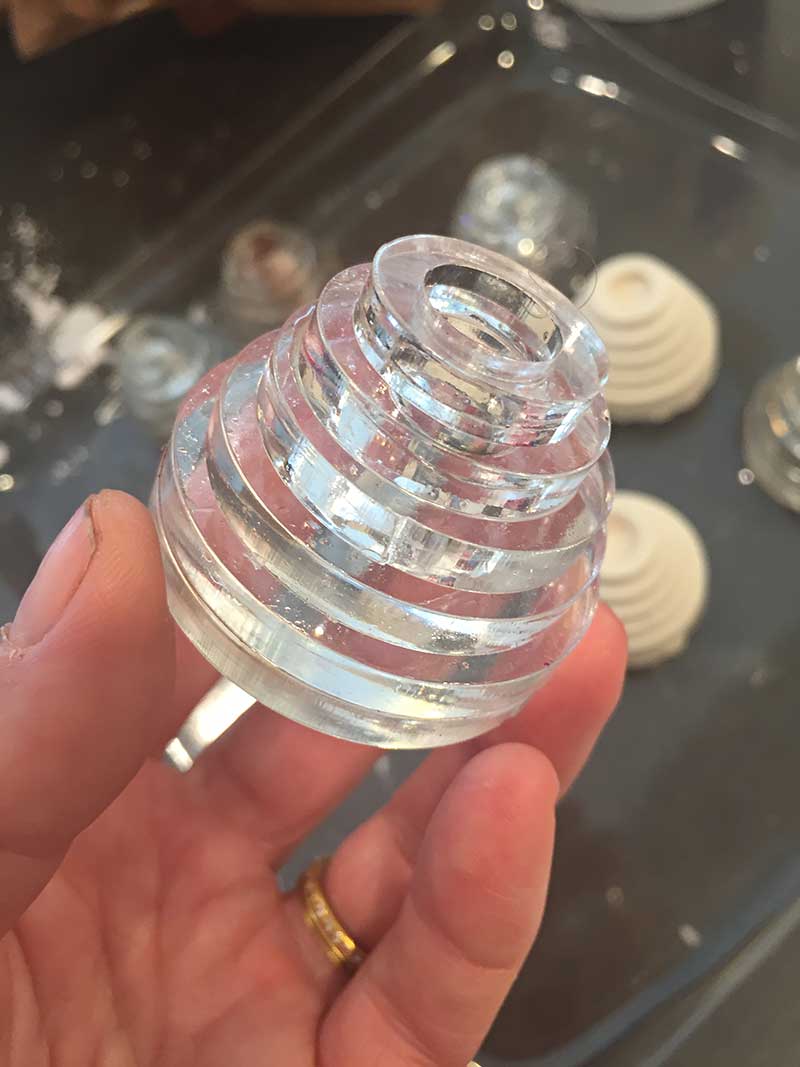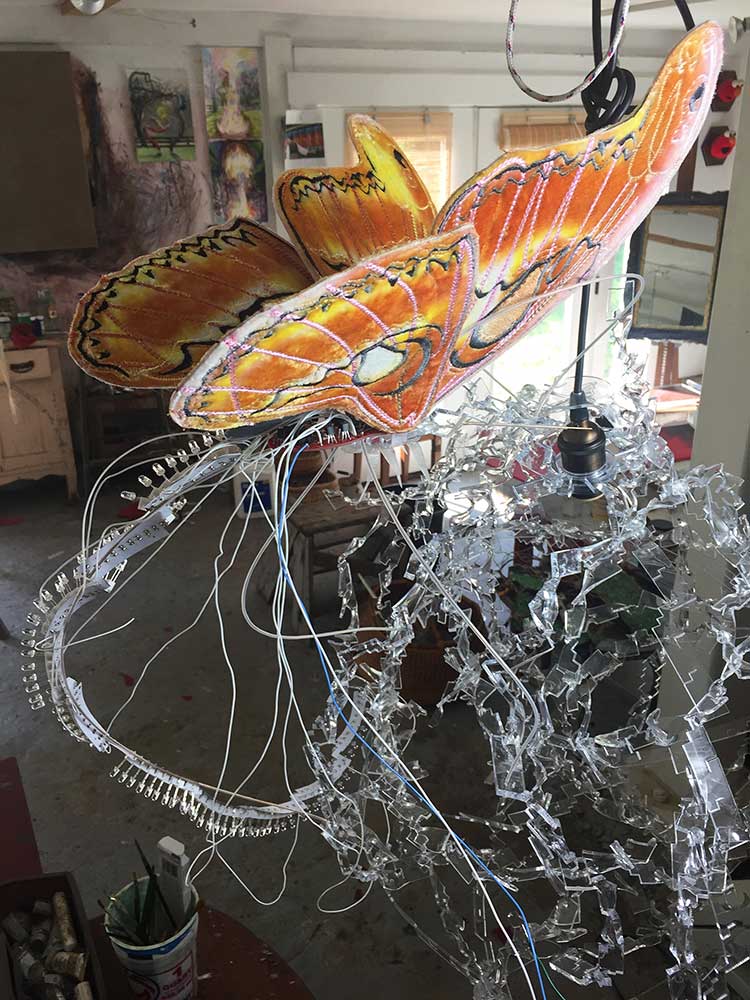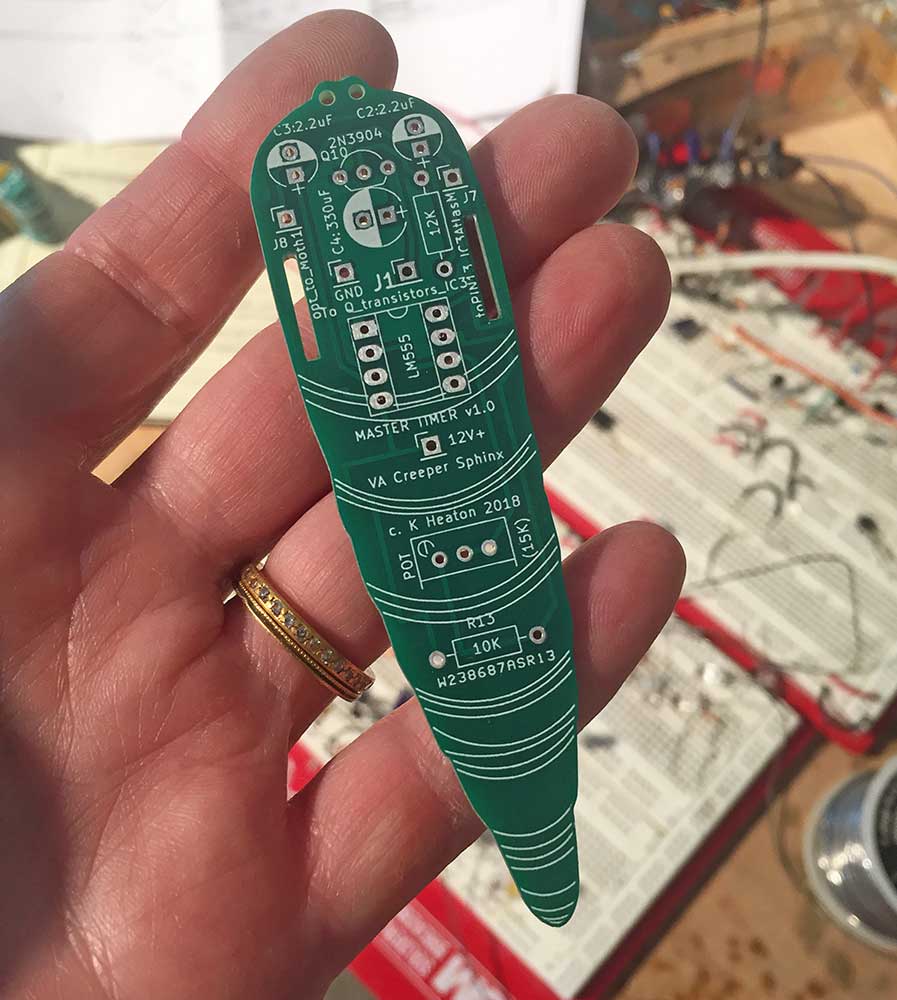Landscape painting and analog electronic soundscape (detail of work in-progress). August 2018
I create the sound of a buzzy August insect using a 555 timer to drive a transistor astable multivibrator (to give timbre). Another slow astable multivibrator provides pulse input to a 555 timer in monostable configuration, that gives a pulse out to the base resistor of an astable multivibrator that sets the tempo. That's why the insect rattles for awhile and then stops (monostable 555 goes high - the rattle tempo is active low).

























